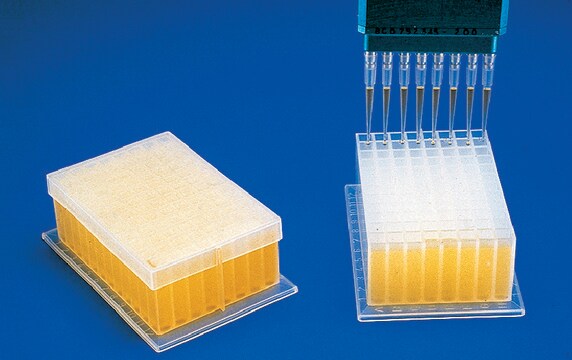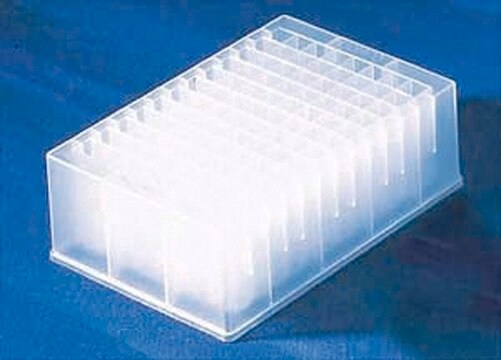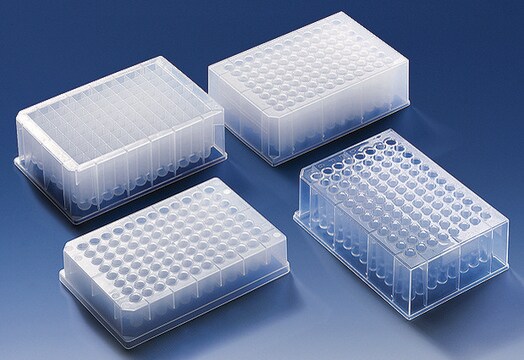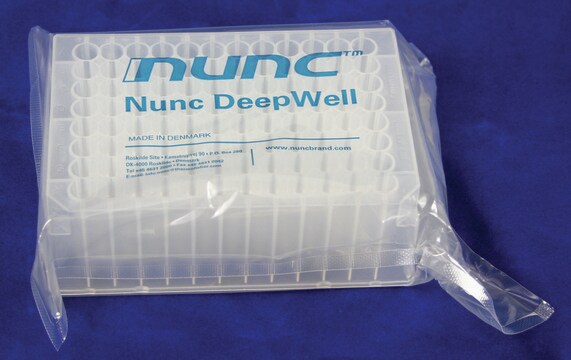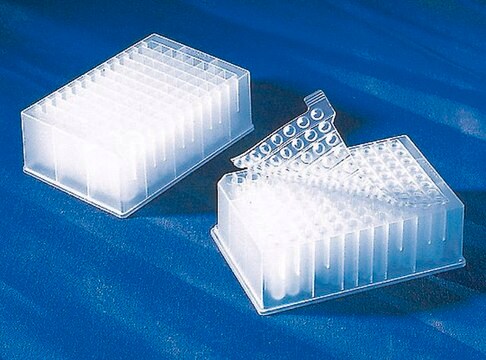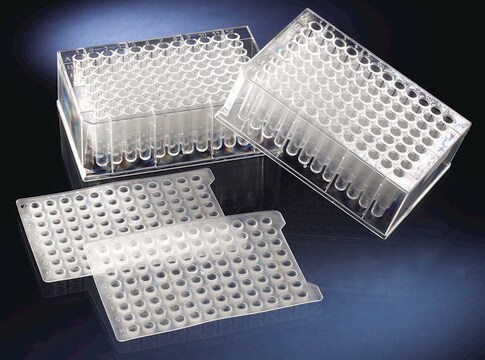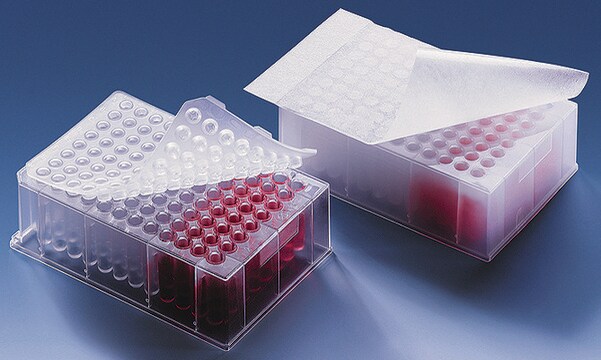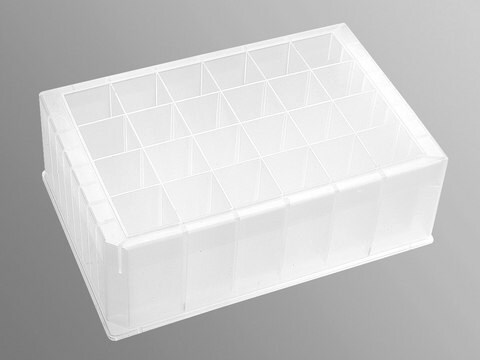BAF378600001
Deepwell 96 well plate
polypropylene, sterile, pack of 24 ea
Synonym(s):
deepwell multiplate, storage plate
Sign Into View Organizational & Contract Pricing
All Photos(1)
About This Item
UNSPSC Code:
41122102
NACRES:
NB.22
material:
conical bottom clear polypropylene wells (translucent)
polypropylene
polypropylene
well capacity:
2 mL
Recommended Products
material
conical bottom clear polypropylene wells (translucent)
polypropylene
sterility
sterile
packaging
pack of 24 ea
manufacturer/tradename
Bel-Art F37860-0001
well capacity
2 mL
Looking for similar products? Visit Product Comparison Guide
General description
These high-form polypropylene 96 well plates expand the flexibility of multichannel or automated pipetting systems. Use for non-binding protein assays, enzyme or receptor assays, or with cell harvesters. The 2 mL per well capacity makes it possible to do serial dilution procedures that are impossible with normal multiwell plates.
Legal Information
Bel-Art is a registered trademark of SP Scienceware, a division of SP
Choose from one of the most recent versions:
Certificates of Analysis (COA)
Lot/Batch Number
Sorry, we don't have COAs for this product available online at this time.
If you need assistance, please contact Customer Support.
Already Own This Product?
Find documentation for the products that you have recently purchased in the Document Library.
Customers Also Viewed
Matthew R Bentley et al.
Journal of medicinal chemistry, 63(13), 6863-6875 (2020-06-13)
A bottleneck in fragment-based lead development is the lack of systematic approaches to elaborate the initial fragment hits, which usually bind with low affinity to their target. Herein, we describe an analysis using X-ray crystallography of a diverse library of
Hoaithuong Do et al.
Environmental pollution (Barking, Essex : 1987), 260, 114051-114051 (2020-05-07)
Soil contamination by toxic heavy metals such as copper is a serious problem. In this study, the extracellular polymeric substance (EPS) extracted from Rahnella sp. LRP3 was found with the potential of immobilizing Cu-polluted in soil. The EPS could bond
Philip Storck et al.
Antibiotics (Basel, Switzerland), 9(12) (2020-12-02)
The increasing number of infections caused by multidrug-resistant bacteria requires an intensified search for new antibiotics. Pep19-4LF is a synthetic antimicrobial peptide (GKKYRRFRWKFKGKLFLFG) that was previously designed with the main focus on high antimicrobial activity. The hydrophobic motif, LFLFG, was
Nataša Mehle et al.
Plants (Basel, Switzerland), 9(3) (2020-03-08)
In recent years, pepino mosaic virus (PepMV) has rapidly evolved from an emerging virus to an endemic pathogen, as it causes significant loses to tomato crops worldwide. At present, the main control strategy for prevention of PepMV disease in tomato
Abdoallah Sharaf et al.
Biomolecules, 9(11) (2019-10-28)
Heavy metal pollution is an increasing global concern. Among heavy metals, mercury (Hg) is especially dangerous because of its massive release into the environment and high toxicity, especially for aquatic organisms. The molecular response mechanisms of algae to Hg exposure
Our team of scientists has experience in all areas of research including Life Science, Material Science, Chemical Synthesis, Chromatography, Analytical and many others.
Contact Technical Service